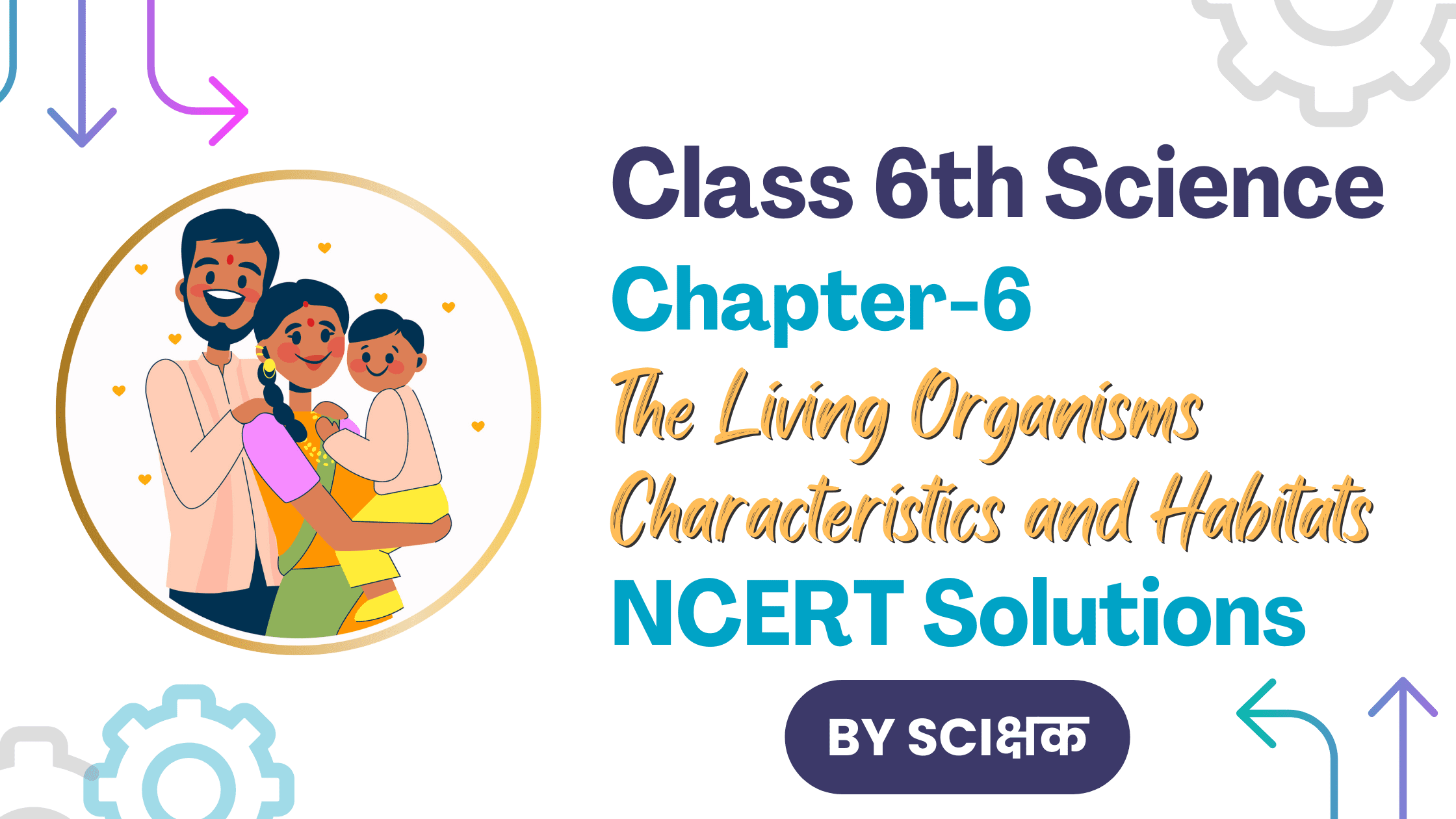Introduction
Before trying to attempt to answer the NCERT exercise questions, you should have a thorough understanding of class 6 Science chapter 6 i.e. ‘Living Organisms Characteristics and Habitats’.
If you haven’t understood the chapter yet, then worry not you can go through it easily and develop a crystal clear understanding of various concepts from our notes whose link has been provided below.
NCERT Exercise Questions & Answers
Que. 1 What is a habitat?
Ans. 1 A habitat is like a home meaning it is a a place where all the basic needs of a living organism are met i.e. food, shelter, water, air, love and care, etc.
Que. 2 How are cacti adapted to survive in a desert?
Ans. 2 Various adaptations that a cactus has that help it to survive in deserts are:
- Their leaves have transformed into thorns or spines that prevent the transpirational loss of water.
- They are covered in a thick waxy layer that prevents the loss of water.
- Cactus has a very thick stem which helps in storing water.
- Cactus has a very strong root system that runs very deep underground in search of water.
Que. 3 Fill up the blanks
(a) The presence of specific features, that enable a plant or an animal to live
in a particular habitat, is called _________.
(b) The habitats of the plants and animals that live on land are called
___________habitat.
(c) The habitats of plants and animals that live in water are called ___________
habitat.
(d) Soil, water and air are the ———— factors of a habitat.
(e) Changes in our surroundings that make us respond to them, are
called_____________.
Ans. 3 (a) The presence of specific features, that enable a plant or an animal to live
in a particular habitat, is called adaptations.
(b) The habitats of the plants and animals that live on land are called terrestrial habitats.
(c) The habitats of plants and animals that live in water are called aquatic
habitats.
(d) Soil, water and air are the abiotic factors of a habitat.
(e) Changes in our surroundings that make us respond to them, are
called stimuli.
Que. 4 Which of the things in the following list are nonliving?
Plough, Mushroom, Sewing machine, Radio, Boat, Water hyacinth, Earthworm.
Ans. 4 The non-living things among the following list are: plough, sewing machine, radio and boat.
Que. 5 Give an example of a non-living thing, which shows any two characteristics of
living organisms.
Ans. 5 Car or any other transportation vehicle shows these two characteristics of living organisms.
- They need energy to do work just like living organisms.
- They show locomotion or movement just like living organisms.
Que. 6 Which of the non-living things listed below, were once part of living organisms?
Butter, Leather, Soil, Wool, Electric bulb, Cooking oil, Salt, Apple, Rubber
Ans. 6 The non-living things that were once a part of living organisms are:
- Butter is obtained from milk which we get from our cattle.
- Leather is obtained from processing the animal skin(s).
- Wool is obtained from sheep, goats, yak, etc.
- Cooking oil is naturally obtained from plant products e.g. mustard seeds, groundnuts, etc.
- Apple is obtained from an apple tree.
- Rubber is naturally obtained from rubber trees.
Que. 7 List the common characteristics of living organisms.
Ans. 7 Some of the most common characteristics possessed by the majority of living organisms are:
- They need food (energy) for their survival.
- They breathe and respire.
- They excrete the waste material.
- They reproduce.
- They respond to stimuli.
- They grow in size.
- They show movements of various kinds.
- They have consciousness*.
- They die.
Que. 8 Explain, why speed is important for survival in the grasslands for animals
that live there.
Ans. 8 Speed is important for the survival of animals living in grasslands because there are mainly two types of animals that live in grasslands i.e. predators (hunters) and prey.
Speed is important for the predators to follow the prey for hunting and speed is important for the prey to outrun their predators while they are being hunted because there are very few places to hide in grasslands for both predators and prey.
So, there is this chase for survival that depends on who is going to outrun who.
References & Credits
- Class 6 Science NCERT Textbook.
- Image by Freepik
Thank You for Choosing Sciक्षक ❤️

